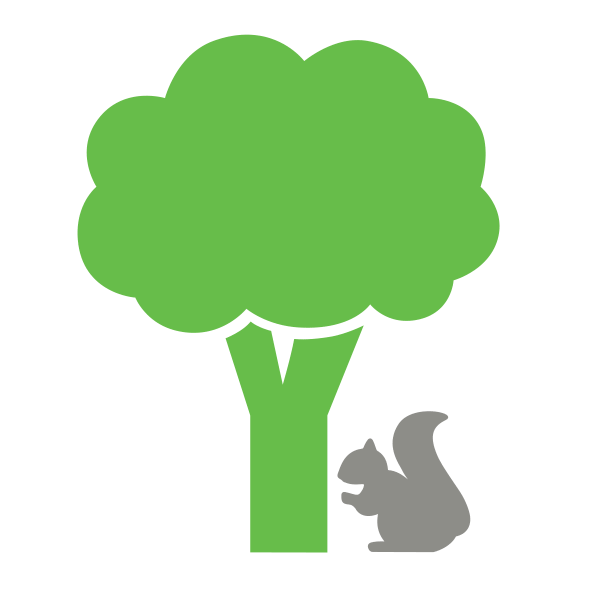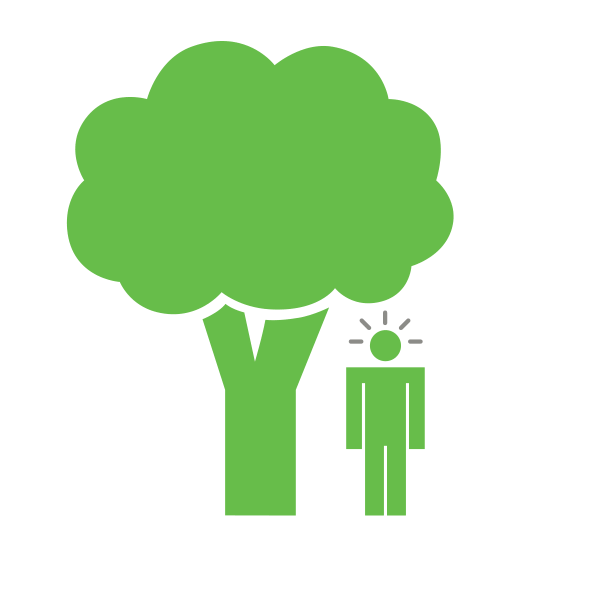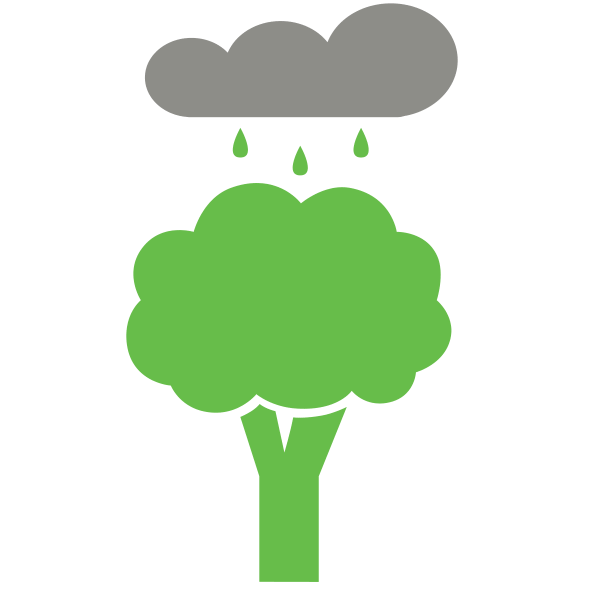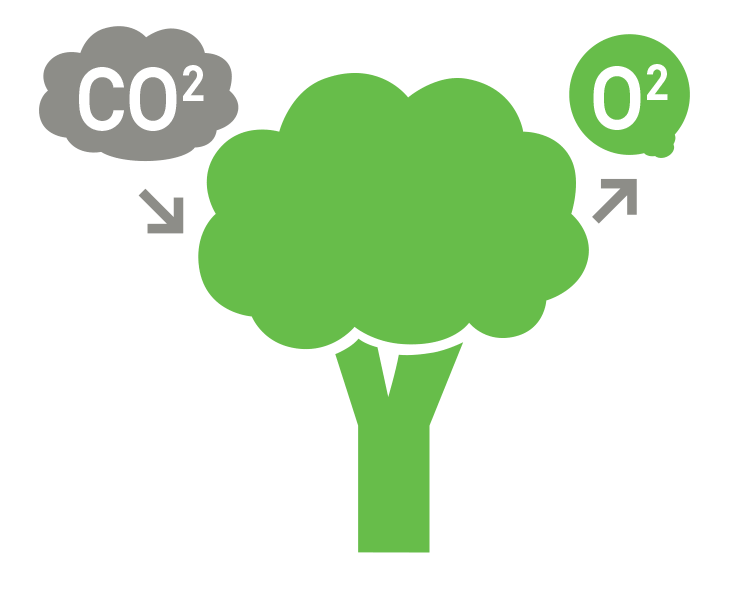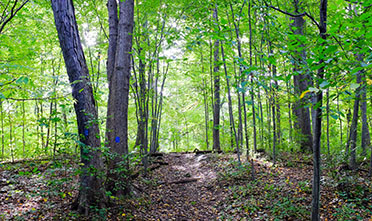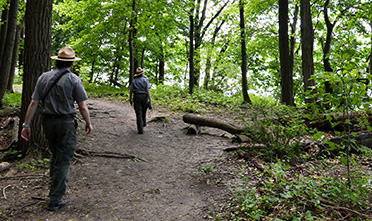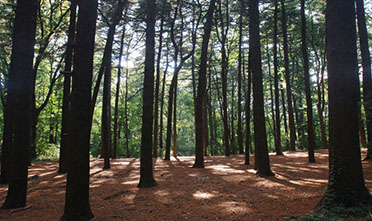Forests in New York City Parks

New York City is home to 6,800 acres of forests! These forests come in a variety of types and sizes, from large forests in Van Cortlandt Park in the Bronx or the Greenbelt in Staten Island to smaller ones like the Raoul Wallenberg Forest in Seton Park. Some of the most common forest types in New York City include oak-hickory, oak-tulip tree, and successional sweetgum. In coastal areas, one can even find vestiges of larger maritime-coastal forests, which are rare in New York State.
Get to know more about our forested areas, and really see the forest for more than just trees! Explore the basic structure of forests, the importance of forests in New York City, how NYC Parks cares for forests, and how you can care for them, too.
Layers of Forests
You may be familiar with the definition of a forest as an area with a lot of trees. And, it is! But a healthy forest actually has several distinct layers:
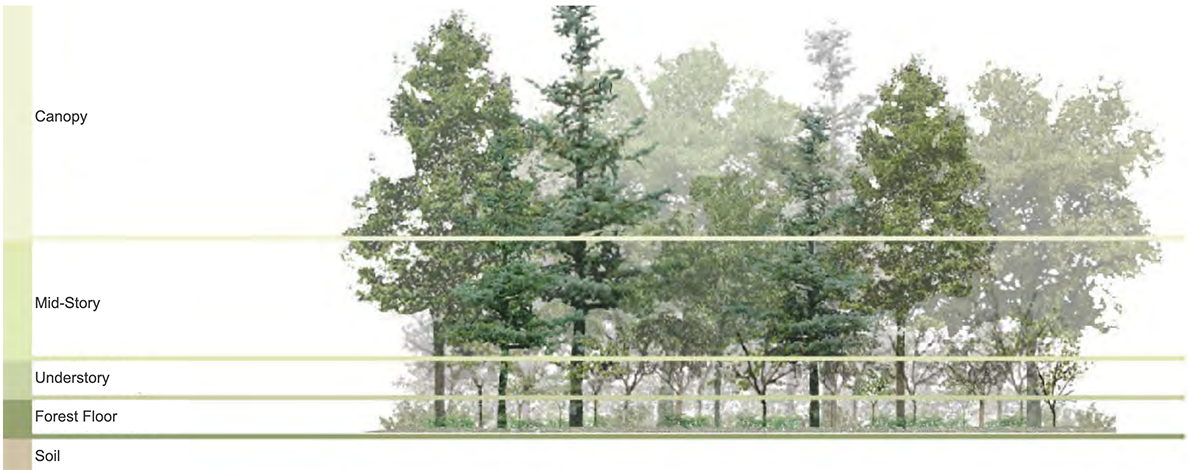
Canopy: This is the uppermost layer. It has the most mature trees and represents which tree species have successfully survived in the forest area over time. A healthy forest canopy is better able to provide ecosystem services, like absorbing carbon and air pollutants from the atmosphere.
Midstory: The trees found one layer lower, in the midstory, represent the next generation of trees for the canopy and create important wildlife habitat.
Understory: The understory is typically made up of smaller trees, saplings, shrubs, vines, and other vegetation that can thrive despite the fact that not much light gets through the canopy and midstory. These plants also help keep the soil below moist so it’s easier for more new plants to grow.
Forest floor: Even the forest floor is important when it comes to keeping our forests healthy. Organic matter on the ground, like dead leaves and fallen trees and branches, provides habitat and resources for wildlife and is a vital part of the process of getting nutrients into the soils and back to trees.
Each of these layers plays a major role in caring for our environment and promoting the lifecycle of nature while helping the forest, itself, grow healthy and strong.
Benefits of Forests
There are many benefits to growing trees in an urban environment. From cleaning our air to bringing the happiness of nature closer to our doorsteps, trees, whether on your block or in our landscaped parks, are important to sustaining a green city. Forests provide the same benefits as trees in our neighborhoods and parks, but with more intensity and at every layer! Let's explore some of the benefits of having forests in New York City:
Providing Habitat for Wildlife
Trees aren't just for the birds. The vertical structure of forests provides important habitat for a diverse assortment of wildlife. Different species prefer different layers. The forest floor is home to a number of small animals including mice, frogs, turtles, and invertebrates like spiders, insects, and worms. These invertebrates eat dead leaves and help recycle organic matter and nutrients through the ecosystem. The upper levels of the forest are home to birds like the red northern cardinal, black-capped chickadees, woodpeckers, and more, as well as larger animals like owls, raccoons, opossums, and squirrels. Insects like moth caterpillars and inchworms are common throughout the canopy. They munch on leaves and are, in turn, munched on by birds!
Our parks are also world-class hotspots for tens of thousands of birds that pass through the Atlantic flyway during fall and spring migration each year. For these migratory birds, our forests provide food to eat, spaces to breed, and safe places to rest.
Filtering Our Air
Trees are our natural air filters. In addition to producing oxygen through a process called photosynthesis, trees actually filter the air by removing dust, nitrous oxide, ozone, and other pollutants that can cause respiratory illness. It’s been estimated that New York City's seven million trees remove more than 1,100 tons of air pollutants every year — more than half of those trees are in our forests!
Improving Physical and Mental Wellbeing
Research studies have confirmed the common wisdom that access to nature improves our physical and mental health.
Our parks are New York City's backyards and the 6,800 acres of forests in our parks offer these amazing benefits while walking, running, rolling, hiking, forest bathing, or birding in the woods.
Absorbing Stormwater
During rain events, when the trees catch the raindrops — a process called interception — less water hits the ground in a short period of time which means less water becomes surface water runoff or flooding. This helps to reduce soil erosion and the amount of water rushing to our sewer system.
While street trees and trees in our landscape parks help absorb stormwater, too, healthy forest soils are better at absorbing water than pavement or bare soil.
Removing Carbon Dioxide
As trees grow, they store carbon in their roots, branches, and trunks. Maintaining healthy trees is vital because the healthier and more mature the trees, the more carbon they are able to pull out of the atmosphere each year. This process is called sequestration. While all trees store and sequester carbon, forests in our natural areas store more than three times more carbon than the street tree population. The forests in our parks' natural areas store more than 2.1 million tons of carbon and sequester 50,000 tons each year, making forests a critical part of our local, nature-based climate solutions.
Learn more about the benefits of trees
Challenges Faced by NYC's Forests
Growing a healthy forest has many challenges. Not only are there naturally occuring threats to forests, but also human disturbances can pose a serious threat to our forests and the benefits they provide. Here are some of the challenges forests in New York City experience:
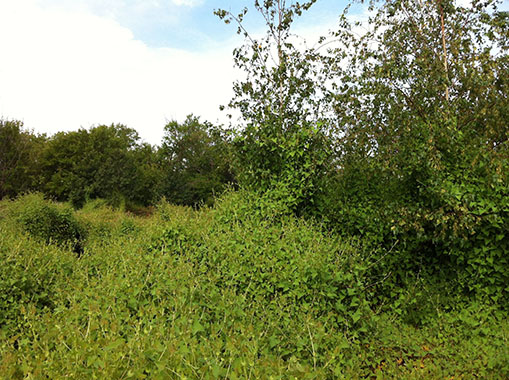
Introduced Species
Even though forest canopy layers in New York City are dominated by native species, the next generation of our forest is not assured to be as healthy. The midstory and understory layers have significant numbers of problematic introduced species, including herbaceous species, trees, and vines, like the mile-a-minute vine shown here. These species can outcompete and block native seedlings from reaching the canopy and can even repress growth and shorten the lifespan of mature trees.
Fragmentation
Over the last few centuries, human disturbances, including highway construction, neighborhood development, and even informal trails in parks, have shrunk and split our region’s forests into smaller and smaller pieces. The environmental conditions of these fragments are not the same as those in a large, mature forest and are not ideal for many native species. The fragmentation of forests also makes it more challenging for wildlife to move across the landscape. Reducing fragmentation is key to restoring and preserving the health of our forests.
How NYC Parks Cares for Forests
To combat some of the challenges our forests face, our staff, together with volunteers, partners, and friends, is working to prevent and correct some of the threats to our forests.
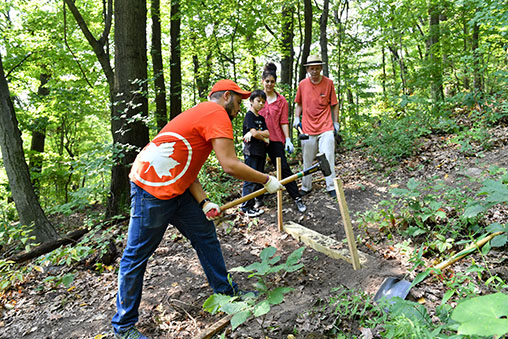
Trail Management
Trail formalization and improvement are important strategies for forest restoration, as they reduce fragmentation and help community members have better experiences in forests. We work with our partners at the Natural Areas Conservancy to close informal trails, create and maintain quality formal trails, and install clear signage to make trails more accessible. One of the best ways to experience our natural areas is by exploring our network of more than 300 miles of trails!
Introduced Species Management
Each year, hundreds of staff and volunteers work to remove problematic species that threaten our forests, including mile-a-minute, porcelainberry, and mugwort. Using expertly crafted native species planting palettes to guide them, NYC Parks foresters plant new trees in forests throughout the five boroughs, choosing trees that are best suited to thrive in each specific environment.
Succession
Like all natural systems, forests are in a constant state of change. The process of different plant species replacing each other in the forest over time is called succession. Most of the forests in New York City are products of this process; most forests in the city were once agricultural fields or open parkland that then succeeded to forests in the last few centuries. Successional forests can take hundreds of years to naturally reach maturity, so NYC Parks uses a number of management techniques to help the process along, including removing introduced species and planting native species that will mimic the succession process and crowd out overabundant introduced species.
Succession in Action
-
After a disturbance, like a wildfire or tree removal, sun-loving plants initially take over the gaps left behind.
-
These plants are then replaced by shrubs and pioneer tree species. These pioneer trees, like cottonwoods and white pines, are typically quick to grow and can tolerate the environmental conditions of disturbed sites, like low moisture, full sunlight, high temperatures, or few nutrients.
-
When these pioneer trees grow large enough to cast shade themselves, they create the conditions for shade-tolerant tree species (like oaks, hickories, and maples) to flourish and persist — until the next disturbance.
How To Help
Just like us, trees need healthy homes to grow.
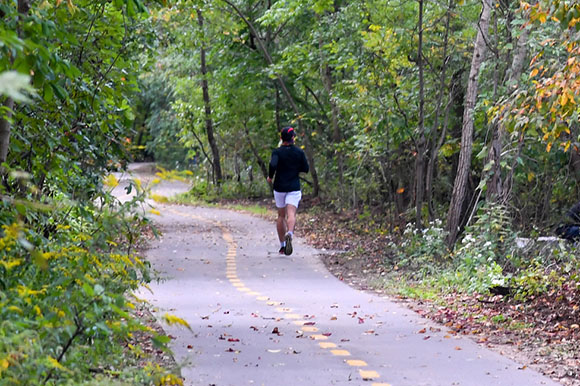
Respect the Trees
When you visit our forests, stay on the trails, take your trash with you, and keep your dogs on a leash.
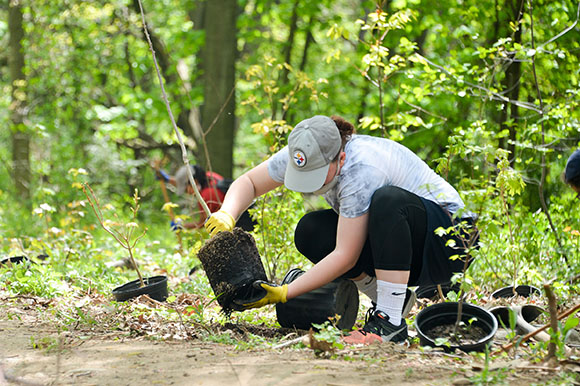
Volunteer with Stewardship
Help us remove introduced species, plant trees, and help young trees grow! Sign up to volunteer
Explore New York City's Forests
Now that you've learned the basics about forests, come visit one and see the trees in action!
Hiking Trails
New York City is home to 300 miles of trails that wind through a significant chunk of our forested areas.
Hiking with the Urban Park Rangers
If you're looking for a more guided experience, join a hike with our park rangers and learn even more about trees!
Most Scenic Woodlands
Our forested areas are some of the most beautiful places to take in the awe of nature.
Resources
- Forest Management Framework for New York City, NYC Parks and the Natural Areas Conservancy
- Guidelines for Urban Forest Restoration, NYC Parks
- Natural Areas Conservancy Nature Map, Natural Areas Conservancy

